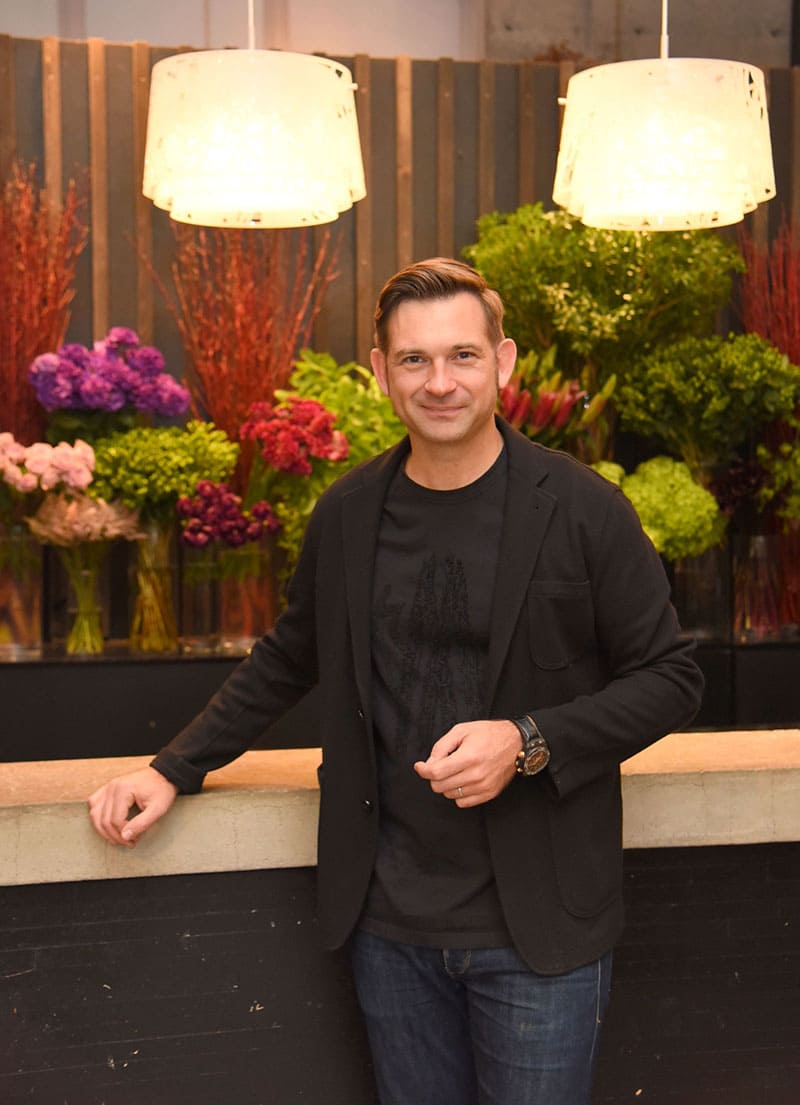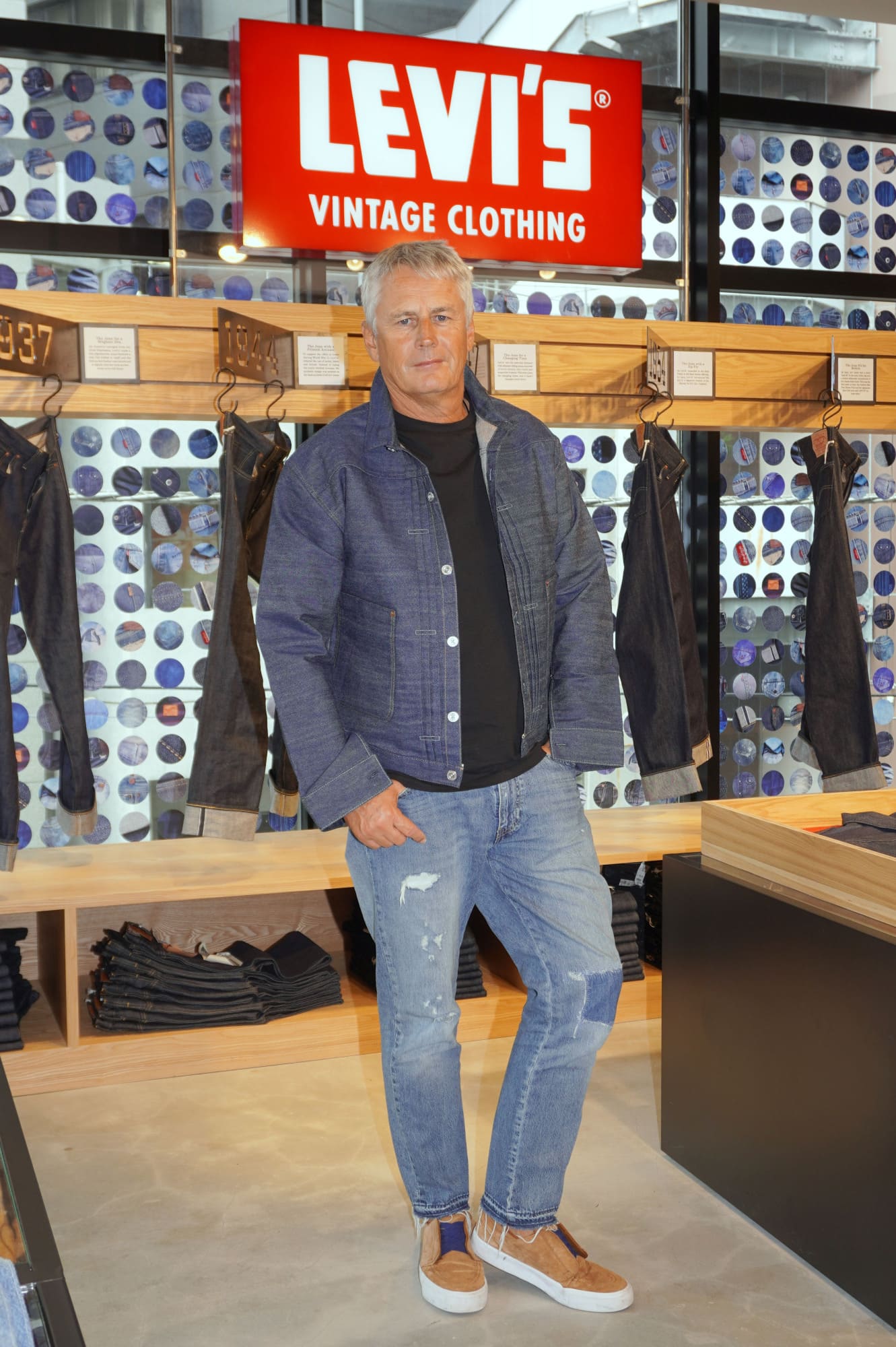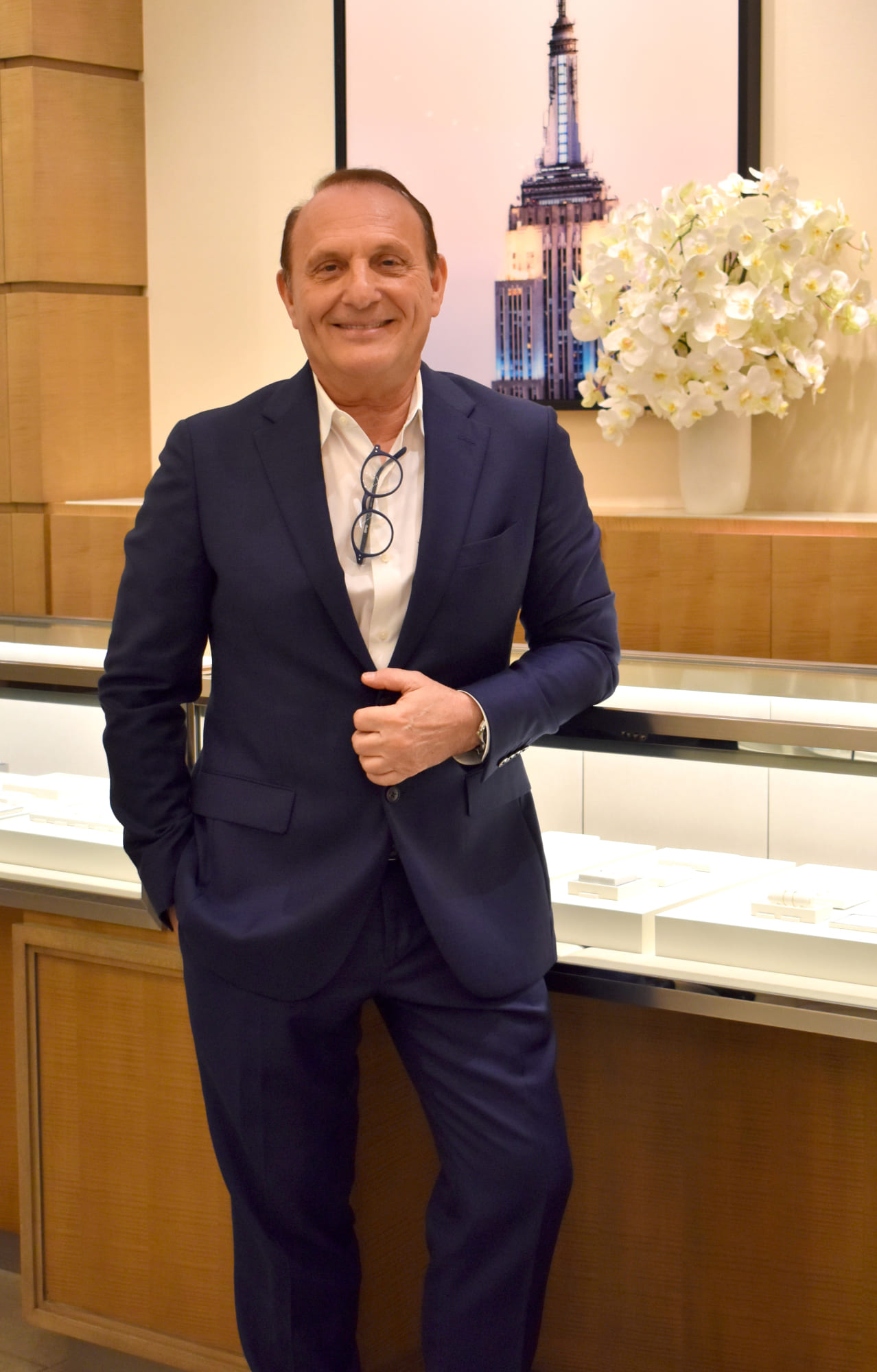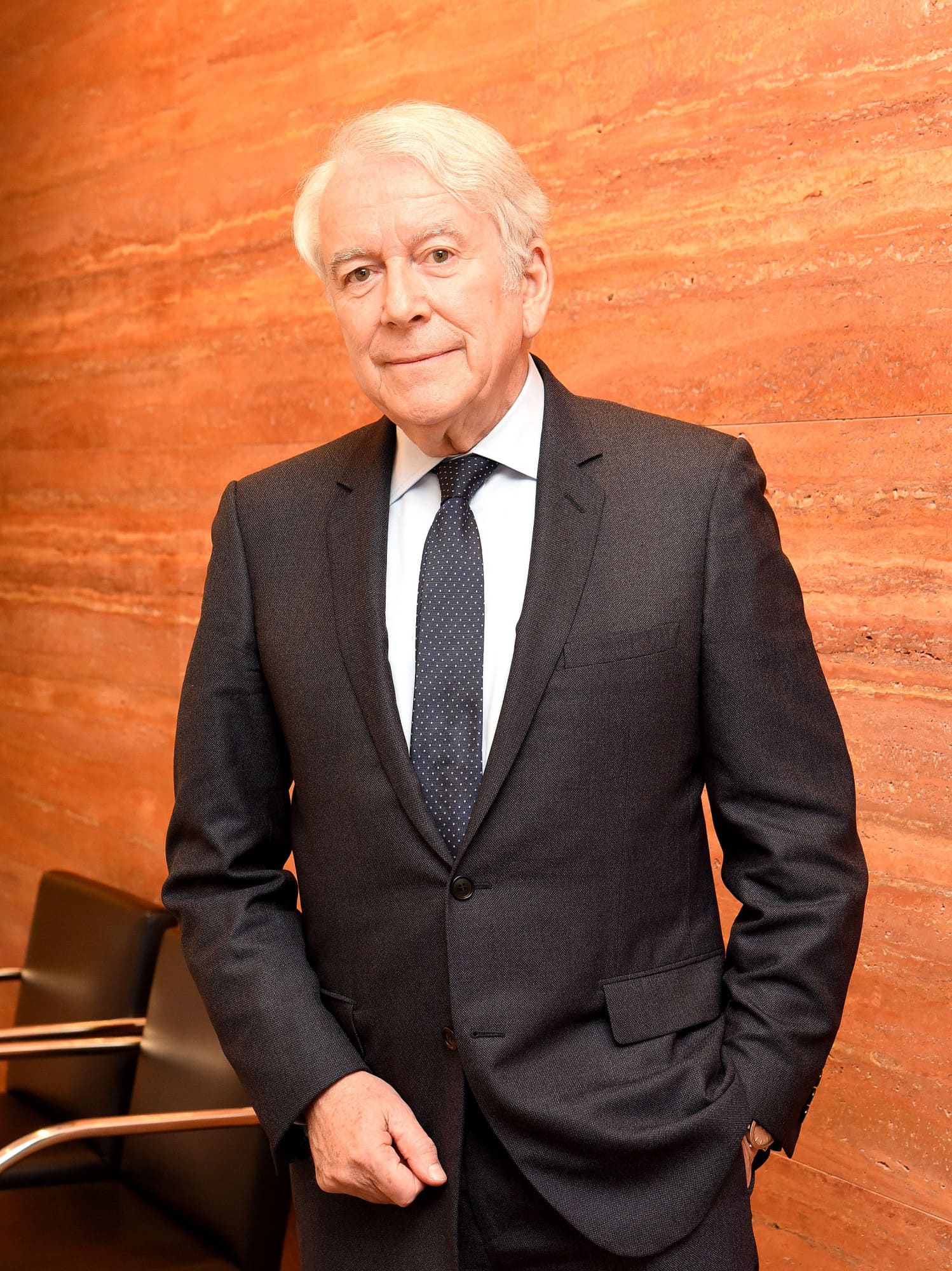
March 10, 2019
Passion nurtures growth and innovative floristry
Nicolai Bergmann cultivates ‘East meets West’ style in flower arrangements
BY JANE KITAGAWA
CONTRIBUTING WRITER
- Name: Nicolai Bergmann
- Title: Floral Artist/CEO
- URL: https://www.nicolaibergmann.com/en/
- DoB: June 12, 1976
- Hometown: Dragor, Denmark
- Years in Japan: 21
Dawn breaks over Tokyo. The streets surrounding Ota Shijo market are still dark and the air is quiet, but inside the Tokyo Bay market’s expansive hangars, a different story emerges. Truckloads of cut flowers and potted plants are delivered for the market’s celebrated floriculture auctions held on Mondays, Wednesdays and Fridays.
Famed Tokyo florist Nicolai Bergmann is no stranger to Ota Shijo, the world’s second-largest flower market, and Japan’s largest wholesale bazaar, where trade is brisk and sales are said to reach billions of dollars annually. Visiting the market and being surrounded by flowers is one of the most enjoyable aspects of his work.
“The market is one of the best in the world because of the diversity of flowers, Japan’s constant change of seasons — long in duration, and under which glasshouse temperatures can be controlled — and Japan’s unique, long and mountainous topography,” Bergmann said at his flagship store, cafe and floristry school in Omotesando.
Floristry has long been a passion of Bergmann’s. The Dane first enrolled in a three-year technical course at the age of 16 after working at a flower shop and instantly falling in love with the craft.
Bergmann was already comfortable around flowers and plants — his grandparents had an apple orchard and his father worked in the potted plant industry. For Bergmann, it was the artistic side of floristry, its potential and being surrounded by flowers that excited him the most.
Upon graduating, he traveled to Japan at his father’s behest and stayed for just three months, working part time at a Saitama flower shop. Language, culture shock and culinary differences proved challenging, prompting his return to Denmark. Japan’s pull, however, was strong.
The legacy of ikebana, bonsai and traditional landscaping fascinated Bergmann, who was inspired by Japanese culture and attracted to the unfamiliar. The option to continue arranging flowers “in my European way” existed, but he returned to Japan.
“I always had a very intense drive to try something new,” he said.
The aesthetically subtle practice of ikebana focuses on shapes, lines and forms. Emphasis placed on unlikely elements such as branches, and leaves proved particularly enlightening for him. It wasn’t as if branches, berries and sticks didn’t exist in Denmark — “There just wasn’t the tradition of using them,” said Bergmann, comparing these elements to how ingredients are used in different cuisines.
Japan’s color palette, a sharp contrast to the bright colors present in European floristry at the time, also influenced his practice. “Japan is so beautifully dark in many ways, so cool and very, very chic,” he said. Color combinations could span dark reds, purples, gold, greens, black and rich browns. “I thought that was incredible. My inspiration comes mainly from kimono materials and old Japanese building interiors; my current color scheme is definitely about that.”
Enthusiastically developing his own “East meets West” style, Bergmann’s breakthrough came with the release of his signature floral box, where artful arrangements are presented almost stemless. As an innovative way of displaying and transporting flowers, the compact boxes were an instant hit.
“To begin, there was the box’s surprise element,” said Bergmann, when asked about why it resonated so much with the Japanese market; it has evolved over the years and remains one of his company’s best-known products. “It’s about making a beautiful product, but also factoring in how it’s been received. Our brand is a good example that if you create storytelling, if you create mystery, … if you can create conversation around a product, it’s so much easier to sell and get people to love, because it’s a communication piece.”
Bergmann also specializes in wedding design and arrangements, floral styling for stores, events and brand-name collaborations. While his floral empire has flourished and encompasses boutiques throughout Japan and overseas, a floristry school and cafes, Bergmann has no hesitation about mentioning failure and lessons learned along the way.
“There have been many times when I just couldn’t read what was going on or found things very difficult,” said Bergmann, describing instinct and gut feeling impacting his business decisions. The early years were difficult. Simultaneously working for other florists when opening his own stores, Bergmann became familiar with the concept of gaman (endurance). Noting the steady growth of his stores and brand as one of his top business achievements, mistakes were still made.
“I opened a store — and failed — in Denmark. You can’t always read a market. My flesh-and-blood — I completely misread Denmark, where people want to make floral arrangements themselves or buy flowers from the supermarket,” he said, laughing and also conceding that opening the store just after the global financial downturn of 2008 was not the wisest of business decisions.
A better, yet more artistically driven decision, is the fruitful ongoing collaboration with the venerable Dazaifu Tenmangu Shrine in Fukuoka, where he is creating floral installations. Bergmann spoke of his utter appreciation for Japanese traditions, but also of a newfound respect learned in part from Dazaifu Tenmangu’s management.
“What I have learned is that if you don’t take chances, then the culture will die out eventually. To take a chance on someone like me in such a historical place, and say ‘Go for it,’ that says everything,” he said, discussing the free rein he was given to work within the shrine’s grounds. “(The Dazaifu Tenmangu staff) said if we need to survive as a culture, we need to show people we can do something different and still give respect to traditions. If it’s beautiful, it’s still respectful of the culture.”
Eye for detail allows trade to branch out
Nicolai Bergmann hails from Dragor, a small town near Copenhagen in Denmark. One of Japan’s most recognizable foreign artists, his name is synonymous with contemporary floral design and his work in Japan has given floristry new dimension. Uniting the floral design principals of Europe with Japanese sensitivity to detail and fine craftsmanship, his works embody the confidence of Scandinavian style. Using his eye for color, form, balance and detail, Bergmann’s collaborations and clients include Louis Vuitton, Furla, Dom Perignon, Kao, Kanebo, Hibiki and Asahi, among others. Bergmann’s business comprises 12 flower boutiques and cafes in Japan and overseas, including an in-house floristry school in Omotesando where he teaches. Bergmann has also expanded his brand to include jewelry, with pieces inspired by botanical elements.

















